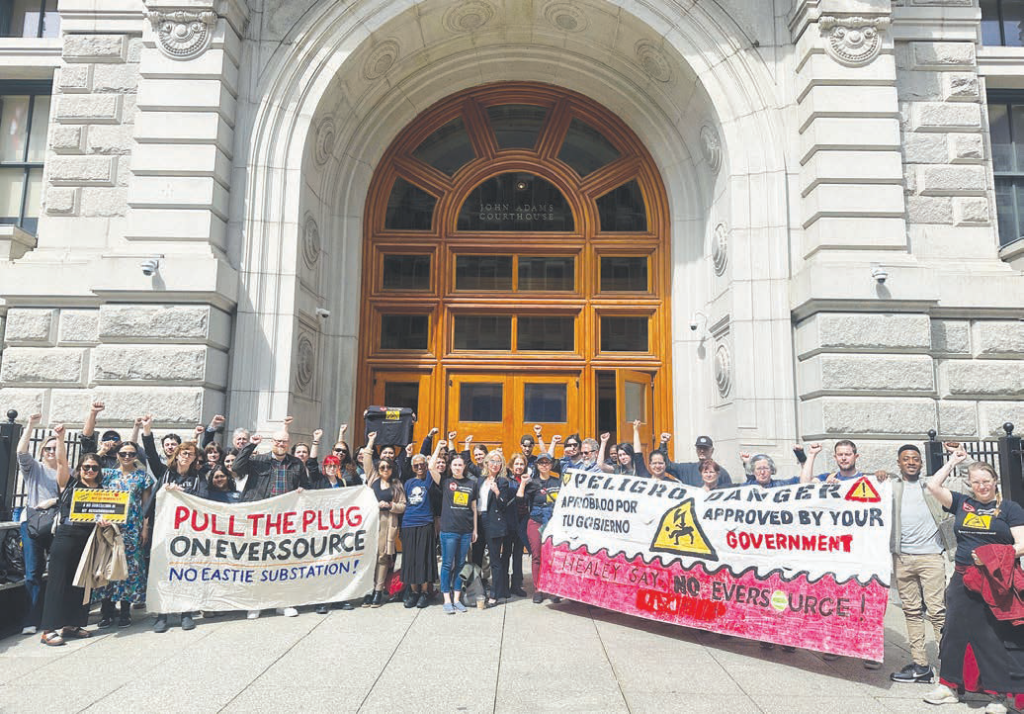The battle over the construction of an electricity transmission substation facility on the Chelsea Creek Waterfront in East Boston made it to the Supreme Judicial Court in Massachusetts for a hearing on Monday.
Local environmental justice nonprofit GreenRoots and the Conservation Law Foundation filed a suit challenging the decision by the the Energy Facilities Siting Board that granted permits that had been denied at the local level.

For nearly a decade, the substation has been opposed by elected officials, residents and experts as it would result in the concentration of potentially dangerous infrastructure, obstruction of neighborhood access to open space and the waterfront, and an increased risk to neighborhood climate resiliency, according to the majority opinion in the Boston City Council’s 2023 resolution opposing the Eversource substation. In November of 2021, 84 percent of voters opposed the siting of the substation on Condor Street on a ballot question.
GreenRoots, the Conservation Law Foundation, and many of those elected officials and residents have argued that the substation will be yet another unfair environmental burden on the Eagle Hill neighborhood. The neighborhood is already faced with the environmental challenges of the harbor tunnel, noise and pollution from Logan Airport, traffic congestion, and huge mounds of road salt and sand along Chelsea Creek.
During Monday’s hearing, attorneys representing the Attorney General’s office argued that the Energy Facilities Sitting Board has the authority to take into account the energy needs of a community when making its decisions, according to the Commonwealth Beacon. Lawyers for the Conservation Law Foundation argued that the 2022 Supreme Judicial Court decision allowing the substation to move forward at a slightly adjusted location did not take into account the environmental burden placed on the environmental justice community as outlined under a 2021 that identifies environmental justice populations under state statute.
At a press conference following the hearing, GreenRoots Executive Director Roseann Bongiovanni thanked the Conservation Law Foundation for pushing the case forward.
“They pushed our case so hard that we felt so strong about and their arguments were very strong,” said Bongiovanni. “We know that this is a case of environmental injustice. This is that state failing to do its job despite the fact that we have environmental justice legislation right now.”
A recently published report by the Union for Concerned Scientists stated that heavy infrastructure and electric substations like the one being proposed in East Boston are mostly built either in or within one mile of environmental justice neighborhoods, Bongiovanni said.
“This is further documented proof that this substation should not be sited in the Eagle Hill neighborhood of East Boston,” she said.
While still awaiting the decision from the justices, Bongiovanni said the justices asked a lot of good questions about environmental justice and issues.
“We should hear back from them in a few months’ time,” she said. “But I feel, with a sense of hope, that our plea for justice will be heard and we will win.”